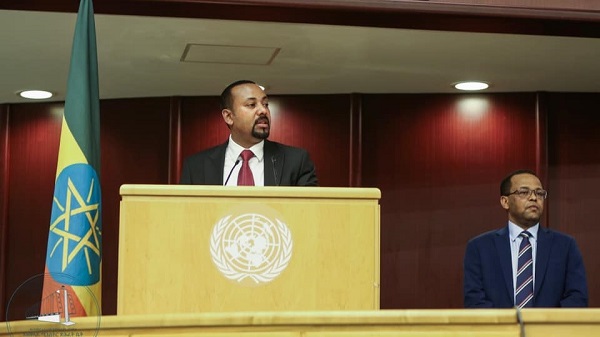
The Ethiopia government has unveiled an economic reform, named Homegrown Economic Reform, aimed at unlocking the country’s development potential and making the country an African icon of prosperity by 2030
ADDIS ABABA (Xinhua) – The Ethiopian government has unveiled a new economic reform blueprint, dubbed Homegrown Economic Reform, with a major aspiration to unlock the country’s development potentials.
“Several months in the making and spearheaded by some of Ethiopia’s finest minds, our initiative aims to propel Ethiopia into becoming the African icon of prosperity by 2030,” said Ethiopia’s Prime Minister Abiy Ahmed, while unveiling the new economic reform agenda on late Monday at the UN Conference Centre in the Ethiopian capital, Addis Ababa.
The newly introduced initiative, Homegrown Economic Reform, among other things, outlined macroeconomic, structural and sectoral reforms that are said to pave the way for job creation, poverty reduction, and inclusive growth.
The Ethiopian premier said that his government has taken a series of measures to shift the economic landscape of Ethiopia, which include reforms in investment laws and business climate, eventually contributing to remove regulatory obstacles that hamper investment in the East African country.
Prime Minister Abiy, who noted that the private sector was crucial for the next chapter of Ethiopia’s growth and development, further stressed that the Ethiopian government has “opened up key economic activities to private investments.”
Prime Minister Abiy , who also on 9 September 2019 briefed development partners and members of the diplomatic community that are based in Addis Ababa on the major aspirations and targets of Ethiopia’s homegrown economic reforms, stressed that the series of measures will “surely be reflected in Ethiopia’s ease of doing business ranking.”
“We are tightening our fiscal belts, strengthening our public sector finances, shedding our debts, and increasing domestic resource mobilization,” said Ahmed, adding that the move is vital in ensuring the success of the new economic development agenda.
The initiative gives special emphasis to sectors such as agriculture, manufacturing, mining, tourism, and information, communication and technology, it was noted.
The Prime Minister also urged Ethiopia’s development partners attending the economic reform-themed meeting, which mainly brought together representatives from the World Bank, International Monetary Fund (IMF), various UN agencies and other development partners, to “support us in crafting Ethiopia’s economic miracle.”
“We realize that our interdependence solidifies Ethiopia’s geopolitical importance in becoming Africa’s gateway to the global market,” he added.
Executive Secretary of the United Nations Economic Commission for Africa (UN ECA), Vera Songwe, who noted Ethiopia’s aspiration to expand its GDP per capita from 865 to 2,219 as “very ambitious,” also stressed that the target is “doable.”
The UN ECA chief also underscored the success stories of China, Laos and Vietnam in realizing similar ambitious economic developments over the past decades, which Ethiopia could also replicate as part of its new economic reform blueprint.
Songwe, however, cautioned that Ethiopia currently has a 10 billion U.S. dollars gap – amounting 6 billion U.S. dollars in new investment and 4 billion U.S. dollars of debt reduction per year – that “must be bridged” in order to achieve its reform aspirations.
Read the complete story at Xinhua
